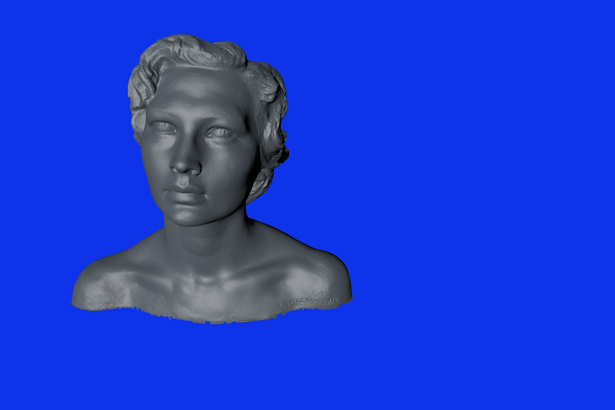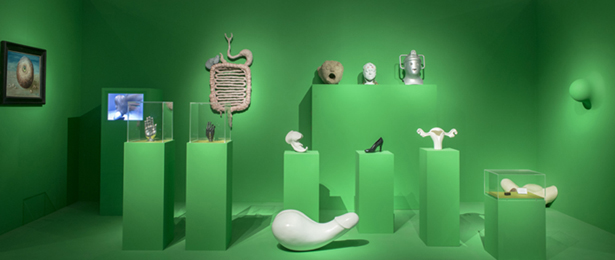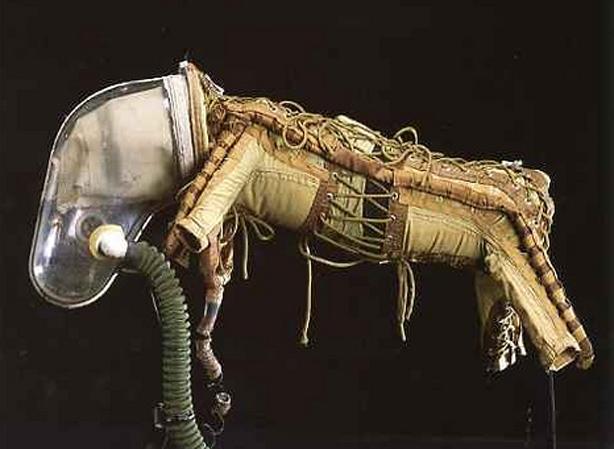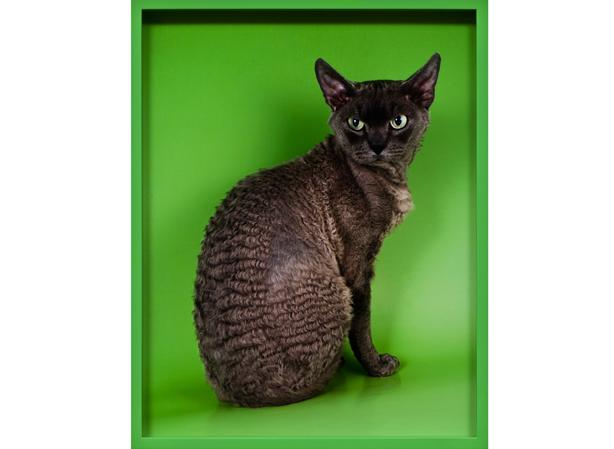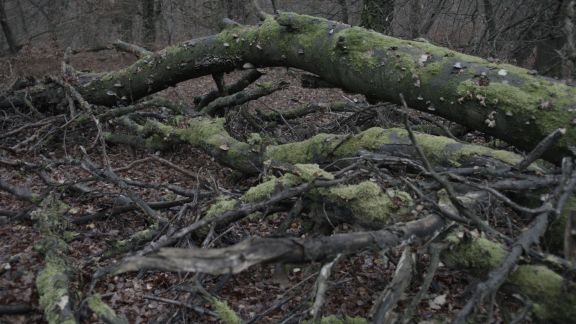
“Secretion” (still), 2012. Video installation, HD video projector, Blu-Ray player, stereo amplifier, two speakers, high-definition video, colour and sound, 20 minutes. © Willie Doherty.
Secretion, 2012, at the Irish Museum of Modern Art
21 May–1 September 2013
IMMA presents the Irish premiere of the internationally renowned artist Willie Doherty’s film work Secretion, 2012, in the Annex at IMMA’s temporary spaces in Earlsfort Terrace. In Secretion, Doherty’s slow camerawork zooms in on fragments of a secluded landscape as well as on an abandoned building at the edge of civilization. The beautiful and sharp shots of fungus attacks, rot and decay, create contradictory visuals in this, at once, compelling and terrifying work. As in a psychological science fiction story, the voice-over describes the peculiar and concealed occurrences in the area without explanation. Shot on location in and around Kassel, Germany, and first shown as part of dOCUMENTA 13, Secretiondraws upon the possibilities of lost and forgotten narratives located somewhere between recent history and a near future.
Nominated twice for the Turner Prize (2003, 1994), Doherty’s work has been the subject of many solo museum shows, and in 2002 IMMA presented False Memory, the first major solo exhibition of Doherty’s work in Ireland. Other solo exhibitions include Dublin City Gallery The Hugh Lane (2011); The Speed Art Museum, Kentucky (2011); Institute of Contemporary Art, Toronto (2009); Fruitmarket Gallery, Edinburgh (2009); Lenbachhaus, München (2007); Kunstverein, Hamburg (2007); Laboratorio Arte Alameda, Mexico City (2006); Renaissance Society, Chicago (1999) and Tate Gallery, Liverpool (1999). Doherty’s forthcoming exhibition, UNSEEN, will present a survey of photographic and video works as part of Derry – Londonderry City of Culture 2013.
The exhibition is curated by Rachael Thomas, Senior Curator, Head of Exhibitions, IMMA, assisted by Séamus McCormack, Temporary Projects, Exhibitions, IMMA.

